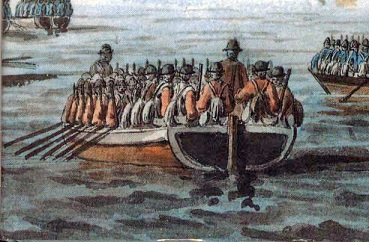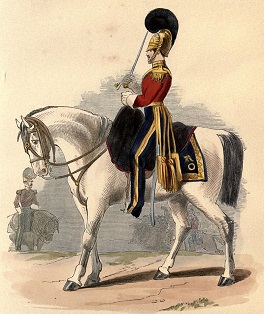Head of Elk, Maryland
Debarkation at Elk's Head

Using flat-bottomed boats stored on the larger ships, the British began five disembarkations. Each wave of flatboats landed about 3,000 soldiers, in addition to ordnance and supplies. There were hundreds of cannon, mortars, and howitzers, plus tents and baggage for the 17,000 men. Add to that ammunition for the artillery: 300 rounds per each field piece and 6,000 spare rounds.
The process of debarking was slow - landing soldiers and equipment on unfamiliar terrain continued throughout the day. Soldiers spent the day constructing huts, foraging, and assisting in the unloading. Some of the British spent Monday night in huts, while others spent one last miserable night aboard ships.

On Tuesday morning, the last off the ships were the horses. 320 had started on the journey. Good, strong horses were needed for hauling the artillery's field pieces. Furthermore, steeds were needed for the "dragoons" (fearless and often reckless horsemen who lead the battle charges). But the horses were in bad shape. Of the 320 horses that began the voyage, fewer than half survived.



